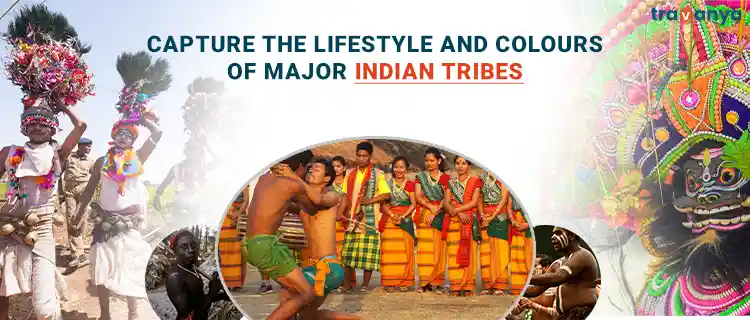
Capture The Lifestyle And Colours Of Major Indian Tribes
Posted on Tuesday, January 18th, 2022 by Pawanpreet Kaur 14 comments
India is truly a land of secrets, with deep-rooted artistic cultures and an enthralling historic significance. What makes it distinctive to others is the quality of life and the primitive lifestyle of few. The Indian tribes are equally vibrant, culturally rich, have unique traditions, cultures, lifestyles, religious beliefs, cuisine, languages, rituals, and a different approach to their lives. They are an example of the ethnographic wealth and culture of Indian heritage.
More than 550 tribal communities in India have had their existence in the country for a long time. Each community has the uniqueness that separates it from the other tribes and adds beauty to the culture of India. All of these tribal people in India share one thing in common, and that’s the distinction from the outside world. These Indian tribes live happily and are unaware of the technology and developments going around the globe.
Amongst the extensive number of Indian tribes, we have profiled the 20 most interesting and comparatively popular indigenous tribal groups and their contribution to the culture in India.
Want to know who are tribals? Check out the Indian tribe names, areas they belong to, and what makes them one of the different tribes in India.
The Colourful & Vibrant Tribal Communities In India
1. Bhils Tribe
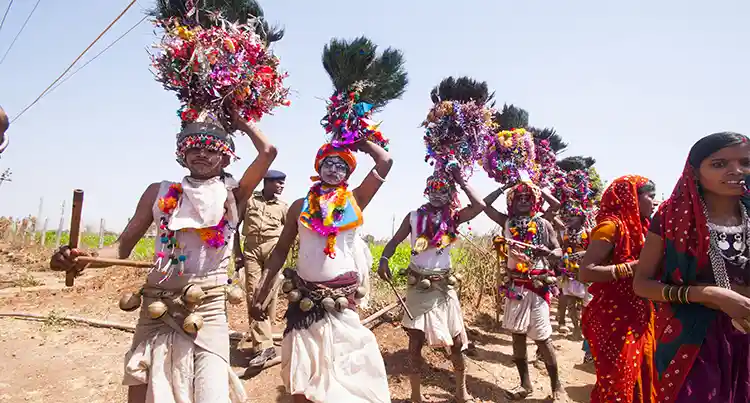
Bhil is one of the largest tribes in South Asia and constitutes 40% of the total population of Rajasthan. This tribal community can be located in the Aravalli Ranges of Sirohi in Udaipur and the Dungarpur and Banswara districts of Rajasthan.
The word Bhil is derived from the Vil or Bil, which means bow. In the history of India, the Bhil tribe were highly valuable as fighters against the Mughals, Britishers, and the Marathas. They furnished the needs of the Princess of Mewar, supplying them with equipment, bowmen, and guardians of their families and children.
2. Gonds Tribe
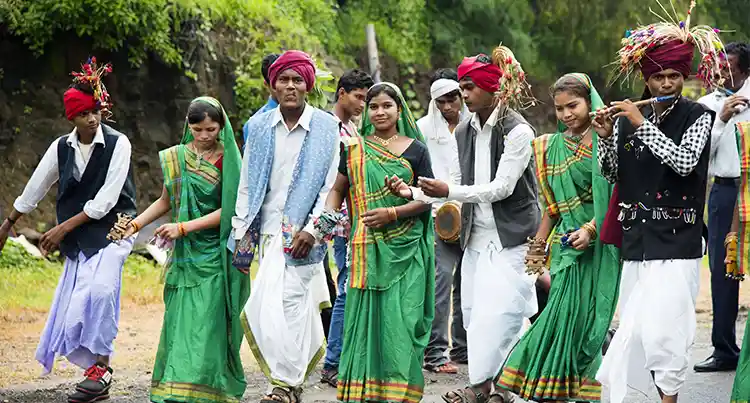
The Gond Indian tribes are known for being brave, and they are mostly found in Central India in the Chhindwara district of Madhya Pradesh. The Gond tribes can effectively communicate in Telugu, Hindi, Marathi, and many other Dravidian languages. Gonds are similar to several tribal groups in India, and they face economic hardships and social challenges.
Gonds mostly live in a village with a headman known as Patel or Mahji. These tribal people in India wear typical Indian dresses, as men in the tribe wear a dhoti, whereas the women adorn a saree and a blouse or choli. Gond tribe ornaments are highly decorative. The staple food of Gonds is two millets known as Kutki and Kodo. Gonds also grow tobacco for smoking and produce liquor for the Mahua Tree.
3. Munda Tribe
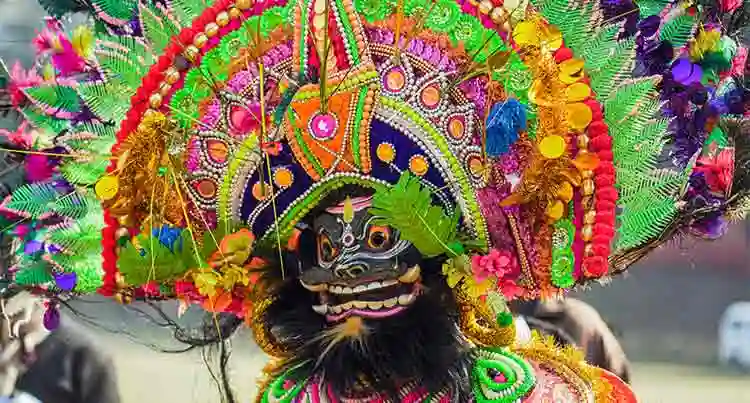
The Munda Tribe has its main habitat in Jharkhand, but their presence can be seen in other nearby states such as West Bengal, Bihar, Odisha, and Chhattisgarh and some Bangladesh. This tribal community is one of the oldest in South Asian countries. The Munda tribe also existed during the pre-British era, but this tribe got recognition between 1857-1928 due to Birsa Munda. Birsa was a prophet and a freedom fighter who played a crucial part in India’s freedom struggle.
Birsa Munda’s contribution to independent India is recognised and honoured by the government of India. On many occasions, Mundas have also been referred to as one of the most powerful tribes of Jharkhand. Munda tribes are mainly woodcutters and have remained animal eaters for a long time. The main language of the Munda tribe is called Killi.
4. Santhal Tribes
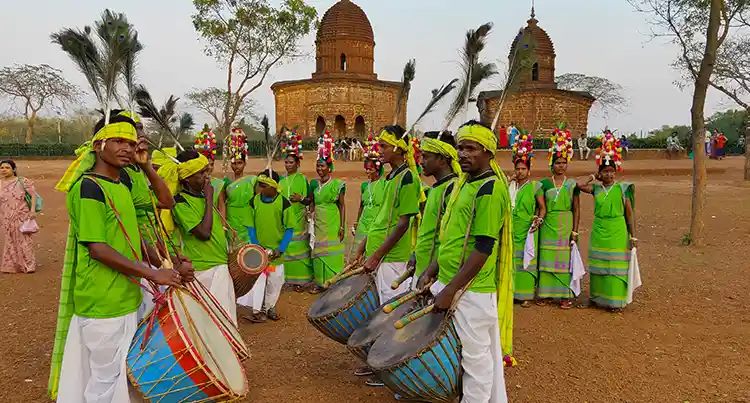
Spread across West Bengal, Assam, Jharkhand, and Odisha, this tribe is densely populated in Bihar. The roots of the Santhal tribe were known to be great warriors who have fought the Britishers for freedom. Santhal tribe is considered to be the largest tribe in Jharkhand.
Santhals love music and dancing to cultural beats. Be it a fair at any festival or occasion, inhabitants of the Santhal tribe will always find a way to connect with music and dance. Santhals speak the Santali language.
5. Toto Tribe
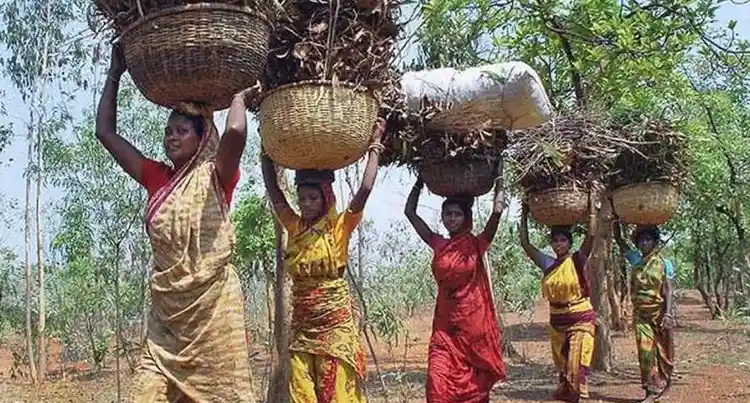
Toto is one of India’s endangered and isolated tribes that can be found in the Totopur region of West Bengal. The Toto tribe remains disconnected from the world. It is reported that the total number of people in this tribe counts not more than 1500, so they are referred to as an endogamous group.
Occupants of the Toto tribe have a very low literacy grade and employment. These tribal people in India mostly collect sandstones from riverbeds, pen pigs, and cow herding. In many case studies by anthologists, this tribe is referred to as ‘a vanishing tribe’ due to their thin numbers as they were near extinction in the 1950s.
6. Bodo Tribe
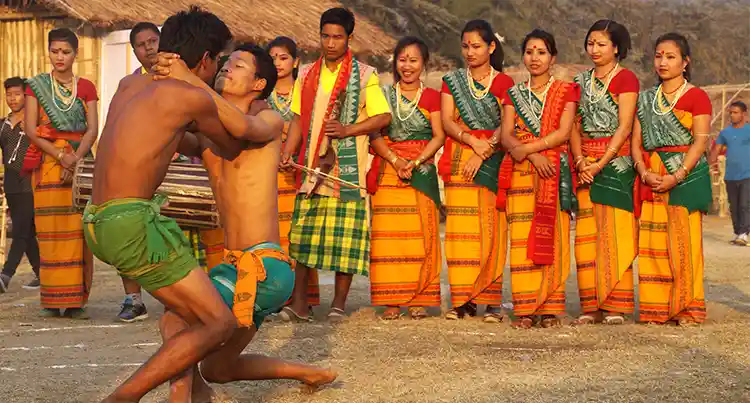
Bodo tribes, one of the major tribe names that inhabit the areas of Udalguri and Kokrajhar of Assam and parts of West Bengal and Nagaland. They are often referred to as Boro Borokachari. If you wish to experience the traditional colours of the Bodo people, then travel to the North East during the Baishagu Festival, which is celebrated during the spring season each year.
Weaving bamboo and baskets are one of the most intrinsic elements of Bodo culture, and hence you can buy some handloom products. Inhabitants of Boro tribes consume non-vegetarian cuisines such as chicken, pork, and fish.
7. Angami Tribe
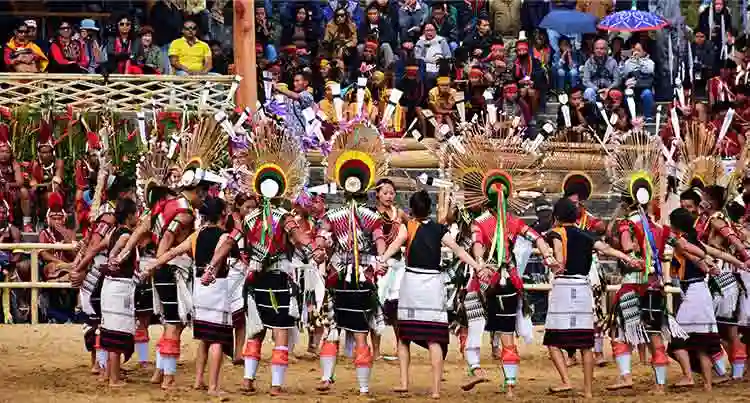
The famous festival celebrated in Angami Naga, called the Hornbill festival, attracts International and domestic travellers to the farthest corner of North East India, Nagaland. The Angami Nagas are one of the major tribes of Nagaland, and they are widely present in the district of Kohima. Their intricate and beautiful woodcraft and artwork also feature a major attraction.
The Angami Nagas produce bamboo, cane furniture, beds, shawls, and robust machetes. The adventurous carnivore travellers may try out some unique pork dishes from the Angami tribe as it’s truly the best. The men and women of these tribal people in India can be seen adorning themselves in black Lohe and ornaments like beads and miniature masks.
8. Bhutia Tribe
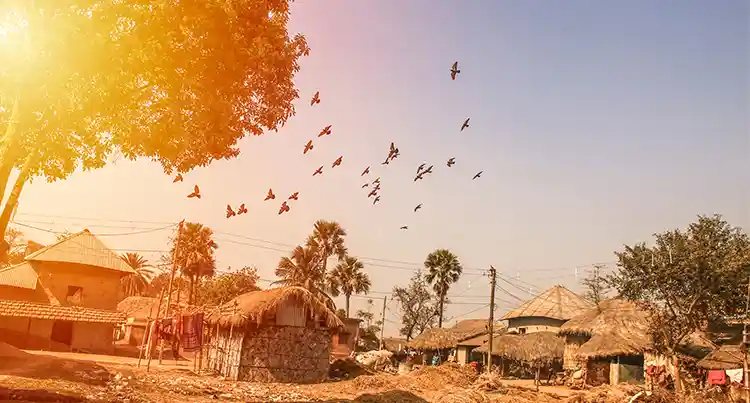
Overlooking the landlocked region of Sikkim, the Bhutia tribe are widely known for their tribe names, traditional grandeur, art, and cuisine. A traveller cannot ignore the unique preparation of momo, steamed meat dumplings, and thumpy.
The Bhutia tribe constitutes a majority of the total population of Bhutan. Inhabitants of the Bhutia tribe love to consume beef and other fat-fried animal meat, occasionally pork and mutton. Losar and Loosong are some of the main festivals celebrated by the tribe of Bhutia.
9. Khasi Tribe
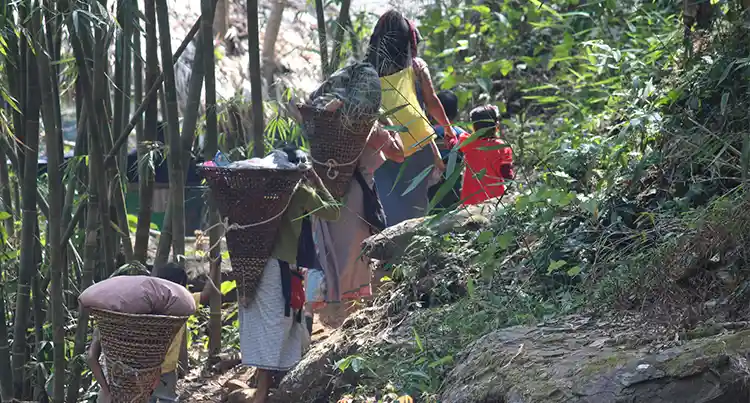
If you wish to discover the hidden cultures of the mystical mountains of Meghalaya, the Khasi tribe should be your answer. The ethical features of the Khasi tribes, are filled with lots of music, recreating musical instruments like drums, flutes and metal cymbals, and are going to make your excursion to Meghalaya memorable.
They are found in the Khasi Hills of Meghalaya and found in parts of Assam, Arunachal Pradesh, Manipur, and West Bengal. The inhabitants are meat-eating people, with their staple consisting of rice and meat-based curries. Although consumption of chicken, fish, beef and lamb is common, there is a priority of pork.
10. Garo Tribe
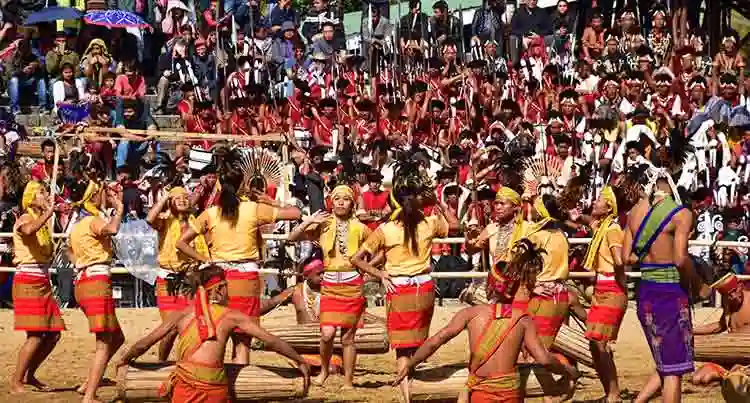
The Garo tribes are the last inhabitants of the matrilineal societies of the world. This tribe is found in the foothills of Meghalaya and are known for their unique lifestyle. They can be found in Bangladesh and parts of West Bengal, Assam, and Nagaland. Being the second-largest tribe in Meghalaya after the Khasi Tribe and comprising about a third of the total population.
Women are often found in traditional ornaments, whereas men wear turbans with feathers attached behind them. Some ideal sights of the Garo architecture are Nokmong, Nokpante, Jamsireng, and Jamadaal. Additionally, the Wangala festival of Asanang is something you can’t miss.
11. Nyishi Tribe
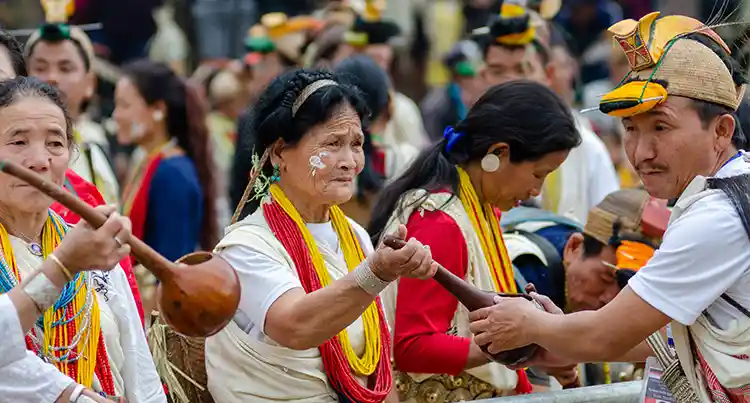
The Nyishi tribes are the largest tribes and inhabitants of Arunachal Pradesh. While a majority of them have converted to Christian, their religion still involves a belief in spirits that are closely associated with nature.
The Nyokum Festival is held every year in February. It is notably dedicated to Goddess Nyokum. This festival has been prominently known as a major attraction for tourists to witness the Nyishi tribes’ cultural heritage and ethnicity.
12. Warli Tribe
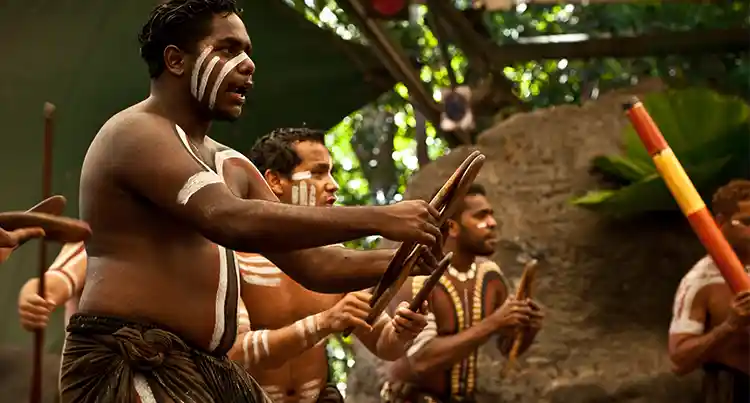
The Warli tribe has their presence across regions of Maharashtra, Karnataka, and Gujarat. The people of the Warli tribe are spread across Nashik, Thane, and Dhule, Valsad, Karnataka, Dadra & Nagar Haveli and Goa. These tribal people in India are small-scale cultivators of vegetables, pulses, and rice. Inhabitants of the Warli tribe also industriously sell fuelwood, mahua, toddy, and a few other products to the other neighbouring communities to sustain their living.
13. Chenchu Tribe
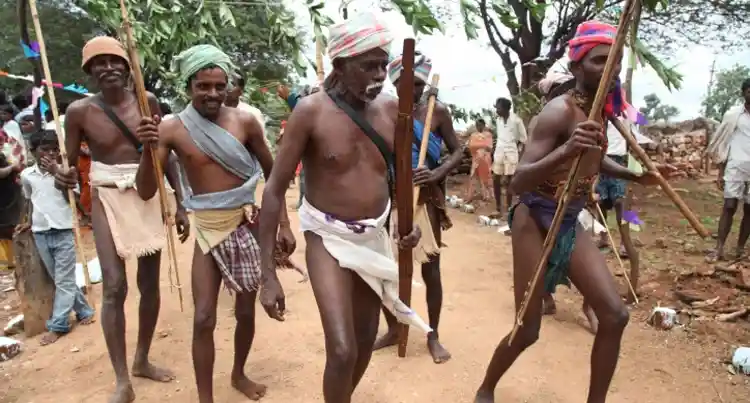
Chenchu tribes can be found in the central hilly areas of Andhra Pradesh. The Chenchus hunt down animals and sell their flesh after filling up their stocks. The meat is exchanged for other items. These tribal people in India also collect forest products such as beedi leaves, roots, fruits, honey, gum, tamarind, mahua flower, and other items. Today, the forest region has been declared as a tiger reserve sanctuary.
14. Siddis Tribe
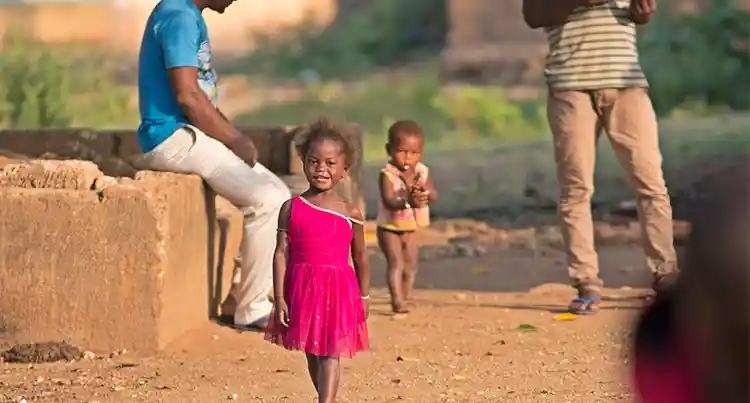
Often referred to as India’s forgotten African Tribe, Siddis are found in India’s 3 states and 1 union territory. Inhabitants of the Siddis tribe are located in Goa and Karnataka. Another major tribe names, the Siddis tribe is known for its fearlessness and tells stories that they weren’t even scared of the beasts, tigers, or snakes.
Siddi is one of those small tribes of India that have finally got recognition and are now a part of the “Scheduled Tribes of the country.”
15. Soliga Tribe
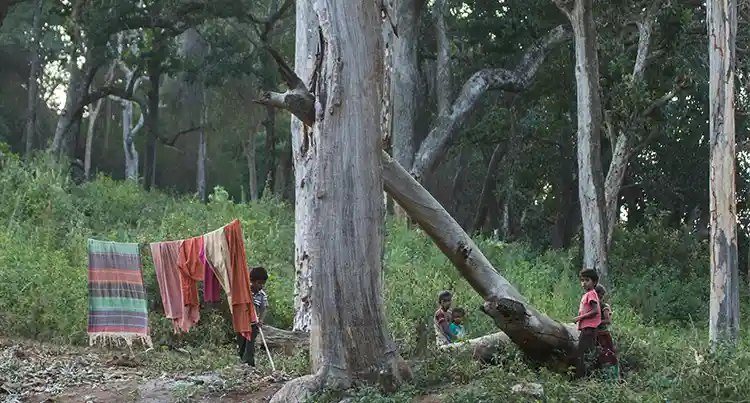
Occupying the luxuriant forest of the Hills of Karnataka and Tamil Nadu, the Soliga tribes are yet another indigenous group of people that are divided into five subgroups – Male Soliga, Urali Soliga, Pujari, Kadu, and Burude.
Inhabitants of the Soliga tribe speak Sholaga, which relates to the Dravidian family. They have been recognized as a scheduled tribe by the Indian Law.
16. Kodava Tribe
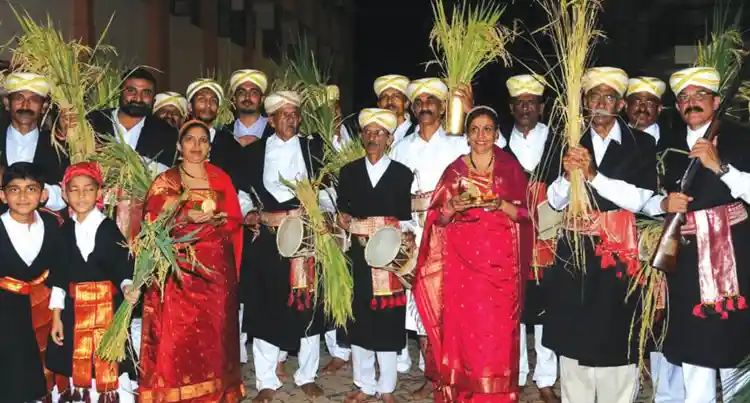
The Kodava tribe is probably known as one of the earliest occupants of Karnataka, especially Coorg. The origin and existence of this tribe are not known to people, and the information about their history is a bit murky. Kodavas are an Indian community of tribes that have been hunters and warriors for a long time. These are also referred to as land-owning tribes with a strong bond with their marital tradition and land.
This Indian tribe has been present in Coorg for a long time but interestingly, since the first census in 1871, their total population has never been more than 25% of the entire population of Coorg. The Kodava tribe has a unique traditional way of dressing themselves, individual conventional and cultural practices, social structure, language, and much more.
17. Toda Tribe
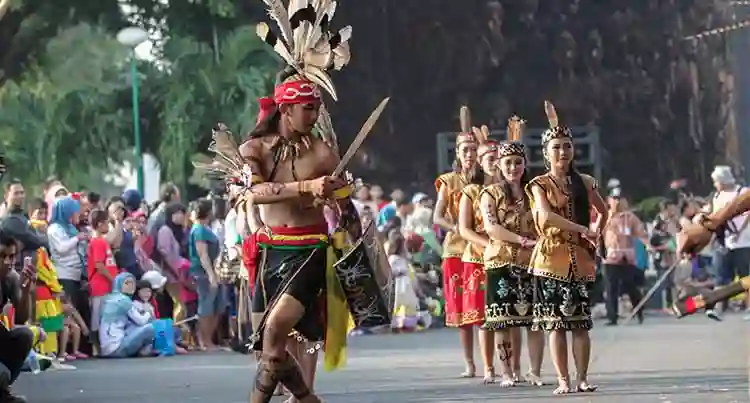
Toda is the most ancient of the indigenous tribes of India, and they reside in the Nilgiris. These people are also known for their finesse in garment and apparel embroidery. The women of this tribe mostly use black and red threads on the white background, giving it a rich effect on each item they produce.
Traditionally, the Toda men of this Indian tribe grew their beards. The members of the Toda tribe are majorly dependent on their cattle for dairy products. However, some of them are also considered experts in silver-smith work. Legends say that Todas are the descendants of Alexander’s Macedonian army who swarmed India in 327 B.C.
18. Irular Tribe
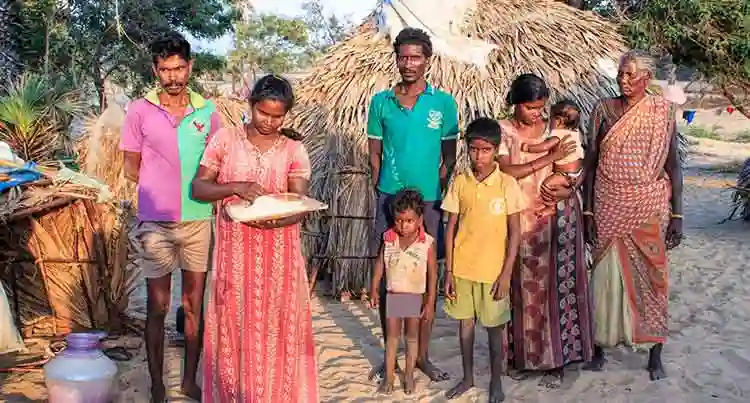
Irula tribe members are widely known as the snake-catchers of India. One of India’s most popular and ancient tribes, Irula, lives on the Kerala-Tamil Nadu border. These people play a critical role in developing anti-venoms because they catch snakes in India and worldwide.
There is an interesting story behind their popularity. Romulus Whitaker, a famous researcher and herpetologist, set up a cooperative in the outskirts of Tamil Nadu in 1978. With the knowledge and skills of the Irula Tribe to catch snakes to produce anti-venoms, he spread the word. Since then, several people from the tribe have visited different countries providing their services. The service they offer is known to be cheaper than pesticides.
19. Kurumba Tribe
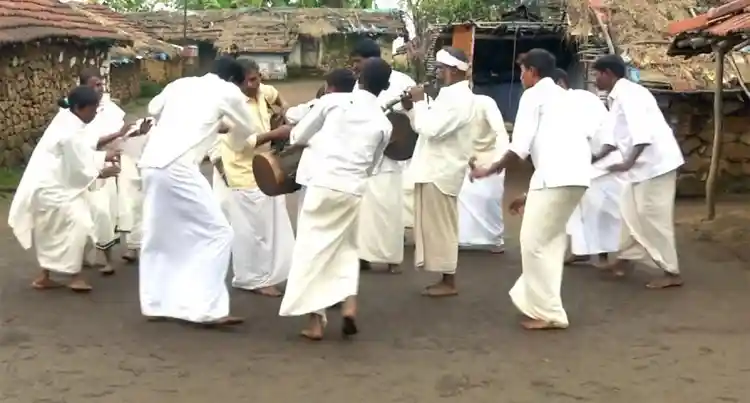
The Kurumba tribe can be found at the foothills of the Nilgiri hills. The individuals of the Kurumba group were known as healers because of their extensive knowledge of medicinal plants, and they continue to excel at the same. They collect and preserve it because it uses many medicines they make. These tribal people in India practise shifting cultivation, trapping, and foraging small animals and birds. Over time, inhabitants of the Kurumba tribe have started working as day labourers in the city.
20. Great Andamanese Tribe
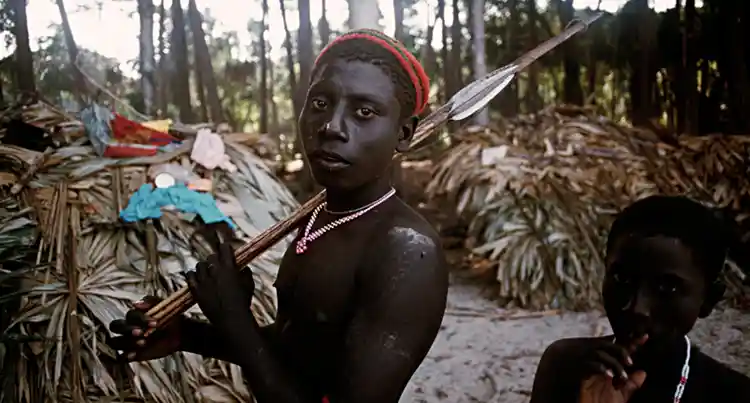
The Great Andamanese Indian Tribes are from the Andaman Islands and part of the Negrito tribal family. With a population of just about 30,000, this tribe is on the extinction threshold. The people of the Great Andamanese Tribe are known for their physical stature, culture, and trade. The staple food of the Great Andamanese Tribe includes rice, wheat, dal, and chapati. This tribe communicates in Jeru, Khora, Andamani Hindi.
Men in this tribe wear narrow belts made of hibiscus flower that suits their bodies. They tuck their weapons in these belts when they hunt. The women display their tribal essence of dressing with a unique design and wear traditional clothing to reflect their community.
| State | Tribes |
|---|---|
| Andhra Pradesh | Andh, Sadhu Andh, Bhil, Bhaghata, Dhulia,rona, Kolam, Gond, Thoti, Goundu, Kammara, Savaras, Dabba Yerukula, Sugalis, Nakkala, Pardhan, Gadabas, Chenchus A.k.a Chenchawar, Kattunayakan, Jatapus, Manna Dhora |
| Arunachal Pradesh | Singpho, Monpa, Abor, Sherdukpen, Galo, Apatanis |
| Assam | Khasis, Chakma, Dimasa, Gangte, Garos, Hajong, Chutiya |
| Bihar | Gond, Birjia, Asur, Savar, Parhaiya, Chero, Birhor, Santhals, Baiga |
| Chhattisgarh | Nagasia, Biar, Khond, Agariya, Bhattra, Mawasi, Bhaina, |
| Goa | Varli, Dubia, Siddi, Dhodia, Naikda |
| Gujarat | Patelia, Bhil, Dhodia, Bamcha, Barda, Paradhi, Charan, Gamta |
| Himachal Pradesh | Swangal, Gujjars, Lahaulas, Khas, Pangwala, Lamba, Gaddis |
| Jammu and Kashmir | Balti, Garra, Sippi, Bakarwal, Mon, Gaddi, Purigpa, Beda |
| Jharkhand | Gonds, Birhors, Savar, Mundas, Santhals, Khaira, Bhumji |
| Karnataka | Gond, Patelia, Barda, Yerava, Bhil, Koraga, Adiyan, Iruliga, |
| Kerala | Malai, Aarayan, Arandan, Uralis, Kurumbas, Arandan, Eranvallan |
| Madhya Pradesh | Kharia, Bhils, Murias, Birhors, Baigas, Katkari, Kol, Bharia, Khond, Gonds, |
| Maharashtra | Warlis, Khond, Bhaina, Katkari, Bhunjia, Rathawa, Dhodia. |
| Manipur | Thadou, Aimol, Maram, Paite, Chiru, Purum, Kuki, Monsang, Angami |
| Meghalaya | Pawai, Chakma, Raba, Hajong, Lakher, Garos, Jaintias Khasis |
| Mizoram | Dimasa, Raba, Chakma, Lakher, Khasi, Synteng, Kuki, Pawai. |
| Nagaland | Nagas, Angami, Sema, Garo, Kuki, Kachari, Mikir, Konyak, Lotha |
| Odisha | Gadaba, Ghara, Kharia, Khond, Matya, Oraons, Rajuar, Santhals. |
| Rajasthan | Bhils, Damaria, Dhanka, Meenas(Minas), Patelia, Sahariya, Rabari Tribe, Lambada(Banjara). |
| Sikkim | Bhutia, Khas, Lepchas. |
| Tamil Nadu | Adiyan, Aranadan, Eravallan, Irular, Kadar, Kanikar, Kotas, Todas. |
| Telangana | Chenchus. |
| Tripura | Bhil, Bhutia, Chaimal, Chakma, Halam, Khasia, Lushai, Mizel, Namte. |
| Uttarakhand | Bhotia, Buksa, Jaunsari, Raji, Tharu. |
| Uttar Pradesh | Bhotia, Buksa, Jaunsari, Kol, Raji, Tharu. |
| West Bengal | Asur, Khond, Hajong, Ho, Parhaiya, Rabha, Santhals, Savar. |
| Andaman and Nicobar | Great Andamanese, Oraons, Onges, Sentinelese, Shompens. |
| Little Andaman | Jarawa |
| Lakshadweep | Aminidivis, Koyas, Malmis, Melacheris. |
| North-East | Abhors, Chang, Galaong, Mishimi, Singpho, Wancho. |
How does the tribal community affect the travel and tourism industry in India?
Since the last few years, India has seen a trajectory in tourism, and tribal tours have become extremely popular among tourists from all over India and abroad.
Tribal tourism has been crucial in creating various economic opportunities for the tribes living across the world. It has helped create awareness about the indigenous tribal people in India, many of whom face oppression, lack of opportunities and unemployment and social exclusion.
While tourism does good for the world, it also creates psychological consequences for the tribals that are more detrimental than beneficial.
However, quite some people and travellers don’t take a sensitive approach to tourism. Research on such subjects has reported the consequences of careless tourist activities in tribal areas. These can include culture shock, exploitation, demoralising culture, and increased inter-tribe conflicts. Tribal communities across India have contributed immensely to the production of handwoven materials, garments and upholstery, thus attracting individuals globally.
Travanya is an enlightening all-India travel portal that helps you book affordable flights and holiday packages for travellers who wish to live their dreams. If you want to travel to India to experience and capture the essence of the country, book your International flight to India with Travanya, and we will assist you in every way possible.
If you live in India and wish to learn more about the Indian tribes, book your Itinerary with Travanya, get affordable and budget-friendly tickets for domestic flights to India, be a part of local festivals, and indulge in India’s deep-rooted culture and tradition. Get a chance to explore India in all its glory and be a part of culture and heritage with Travanya. You can contact us at +91 800-023-5865 to find the latest information regarding affordable flights and travel news.
About Pawanpreet View All Posts
Pawanpreet is a versatile content writer and editor who enjoys experimenting with various niches of writing. Her keen eye for detail and love for thorough research helps her create high-quality content to outweigh clickbait. She extensively works for digital marketing and manages clients that range from travel to luxury goods. Her creativity is fueled by her love for learning new things, travelling, and the environment. Also, she is a free soul and an avid animal lover who believes in doing everything with a smile :)



It makes more easier for to learn more about tribals thanks
Hello Rithick ji,
Thank you for taking the time to read our post! We’re thrilled to hear that our blog has made it easier for you to learn more about the fascinating world of Indian tribes. Keep returning for more such beautiful and interesting posts. And, if you ever have any travel-related queries or need assistance, please don’t hesitate to reach out. You can call us at +1-585-948-0222 or join our live chat – we’re here to provide you with the best of our services. 🙂
Warm Regards,
Team MyTicketsToIndia
भारत सरकार द्वारा जारी मध्य प्रदेश राज्य में अधिसूचित अनुसूचित जनजाति समूह सूची में क्रमांक 35 पर उरांव,धानका,धनगड़ जनजातियों में मध्यप्रदेश राज्य आदिम जाति अनुसंधान एवं विकास संस्था भोपाल अपने शौध अन्वेषण में उरांव को मुख्य जनजाति बताकर धानका, धनगड़ जनजातियों को उपजाति के रुप में बताता है एवं धानका, धनगड़ जनजातियों के गौत्र नाम, रहने सहन लक्षण और उरांव जनजाति की भांति होती है वस्तुत धानका मुख्यत रायगढ़ जिले तथा धनगड़ रायगढ़ जिले के आसपास पाई जाती है। बताया जाता है। चूंकि प्रार्थी धानका जनजाति से है और प्रार्थी का परिवार और धानका जनजाति समाज के लोग नीमच जिले में स्वतंत्रता के पूर्व से ही निवास करते हैं प्रार्थी द्वारा रायगढ़ जिले के आदिवासी विभाग, अखिल भारतीय आदिवासी कल्याण आश्रम जशपुर तथा Census of India 1961 में भी स्पष्ट रुप से बताया गया है कि रायगढ़ जिले में धानका एवं धनगड़ जनजातियों का प्रतिनिधित्व नहीं पाया जाता है। क्या आप जानकारी दे सकते है कि क्या ? मध्यप्रदेश राज्य आदिम जाति अनुसंधान एवं विकास संस्था भोपाल का शौध अन्वेषण कि धानका और धनगड़ जनजातियां उरांव जनजाति की उपजाति होकर छत्तीसगढ़ राज्य के रायगढ़ जिले में ही पाई जाती है। आपके उत्तर का इन्तजार रहेगा।
Excellent write-up! great collection. May I have your permission to use photo and content to make desk calendar pls. by acknowledging your name.
Hello Rajeev ji,
It’s a beautiful feeling to know that you loved this post. Thanks a ton! However, could you please throw some light on the purpose you want to use the content and images for? If it’s for a personal desk calendar, we don’t have much of an issue. But if you want to use it for business, we’d like to discuss it at length.
Thank you so much!
Warm Regards,
Team Travanya
Hi Pawanpreet ji,
Thank you for your kind response. I am from humanitarian and development sector and works with rural and tribal communities in India and Africa. I wanted to share this rich information by publishing and distributing for free to our associates, friends and the community organisations I work with. Incase you would like to know more, my linked in is http://www.linkedin.com/in/rajeev-vishwakarma-1a83198. You can also communicate through my email if is required.
best regards,
Rajeev
Hello Rajeev Ji,
Thanks for acknowledging our post! We are extremely elated to know that you liked the information provided by us. We have no concerns if you want to use the information for your desk calendar unless or until our name is mentioned over there.
Warm Regards,
Team Travanya
Hello Pawanpreet ji,
Thank you so much for your kind permission and sure will acknowledge you! Much appreciated!
it is amazing to read about tribes, livelihoods and culture. It is a fascinating subject. the write up is excellent.
Hello Mr Rao,
We are extremely delighted to know that you liked our write-up. India is incredibly diverse and vibrant and one must travel to different regions of the country to explore its beauty.
We are an IATA-Certified tour and travel agency that help customers with cheap and affordable travel within India and to other 120 cities around the globe. Do check the exclusive flight deals and discounts with us and plan a beautiful trip to witness the serenity of the country.
Join our live chat or get in touch with our team of travel experts at +91-800-023-5865!
Warm Regards,
Team Travanya
Dear Pawanpreet Kaur,
Kindly suggest some books on colonial impacts on Indian tribal communities.
Thanks!
Hello Syed,
Thanks for reading my article. Here are some suggestions regarding the books on Indian tribal communities that you can give a read:
1. Tribal Justice by Jogesh Pratap Singh
2. The Tribal Culture of India by Vinay Kumar Rai and L.O Vidyarthi
3. Hidden Tribes of India by T.Baldizzone
4. Tribals and the Indian Constitution by N.K Behra and Nilakantha Panigrahi
Warm Regards,
Team Travanya
its so beautiful i proud india
Namaste Sultan Ji,
Yes, Indeed it is! That is why we should find a little time from our daily hustle sometimes and explore any of its beautiful destinations. Our diverse India is loaded with beauty and culture, so let’s drip into its serenity and know the country even better.
For cheap flights in India, you can get in touch with our customer support team at 800-023-5865. Share your budget with us and we shall help you guide with flights according to your budget.
Warm Regards
Team Travanya